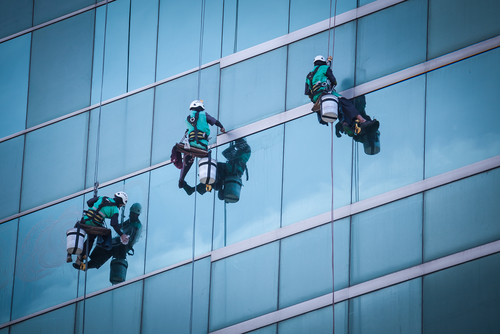Some jobs are just more dangerous than others. It’s fairly obvious, of course, that steelworkers face greater hazards than office workers—but some hazardous jobs might be less obvious. Are your workers in a high-risk occupation? Here’s what the Bureau of Labor Statistics (BLS) has to say about what industries and occupations pose the deadliest hazards.

High-Risk Industries and Occupations
The most dangerous industry, to no one’s surprise, is construction, which had the highest number of fatal work-related injuries of any sector—796 workers died in construction in 2013. Construction laborers had the highest number of fatalities within this industry.
Other dangerous industries and occupations are:
- Transportation and warehousing (687 fatalities). This sector includes truck transportation, and of course, transportation injuries are the leading cause of fatalities across all industries. Drivers/sales workers and truck drivers accounted for more than 3 out of every 5 fatal injuries in this sector. The BLS expects these numbers to rise in 2015, based on additional data not included in its original numbers.
Your one-stop safety management resource, available 24/7. Go here to take a no-cost site tour or here to try it in your own office!
- Agriculture, forestry, fishing, and hunting (479 fatalities). In particular, fatal injuries were up 25% in forestry and logging, and this industry sector had the highest overall fatal injury rate, at 22.2 fatal injuries per 100,000 full-time equivalent workers.
- Government workers (476 fatalities). It may seem strange that government workers would be at risk, as a category—but the largest number of fatalities in this industry group were to contract workers, themselves a high-risk group. In addition, because of the way that the Occupational Safety and Health Administration (OSHA) is structured, not all government workers fall within OSHA’s jurisdiction, which may affect compliance with safety regulations in this group.
- Private mining, quarrying, and oil and gas extraction (154 fatalities). As with government workers, many of the fatalities in this industry were to contract workers.
Great news! BLR’s renowned Safety.BLR.com® website now has even more time-saving features. Take our no-cost site tour! Or better yet, try it at no cost or obligation for a full 2 weeks.
The takeaway for employers: In each of these industries or occupations, there is a strong correlation between increased risk and a high-risk activity or group (discussed in the two preceding articles). High-risk groups (Hispanics/Latinos, contract workers) in high-risk occupations (construction laborers, government contract workers) face a sort of “double jeopardy.” High-risk industries and occupations also correlate with high-risk activities: In construction, workers face a disproportionate risk from falls; in transportation, workers face a disproportionate risk of highway crashes and nonroadway transportation incidents. So, make sure that you have identified all of the risk factors that apply to your workers, and make a sustained effort to address the workers who fall into the greatest number of risk categories.
Knowing the risks is one thing; controlling them is something else altogether. Improve your odds with the resources available to you through Safety.BLR.com®.
